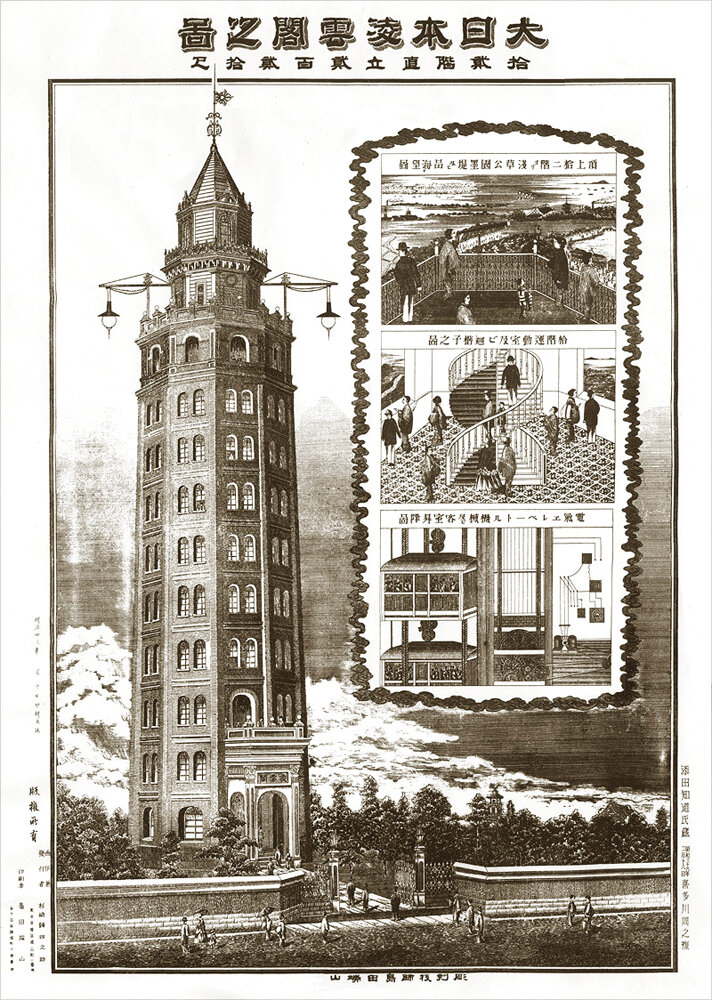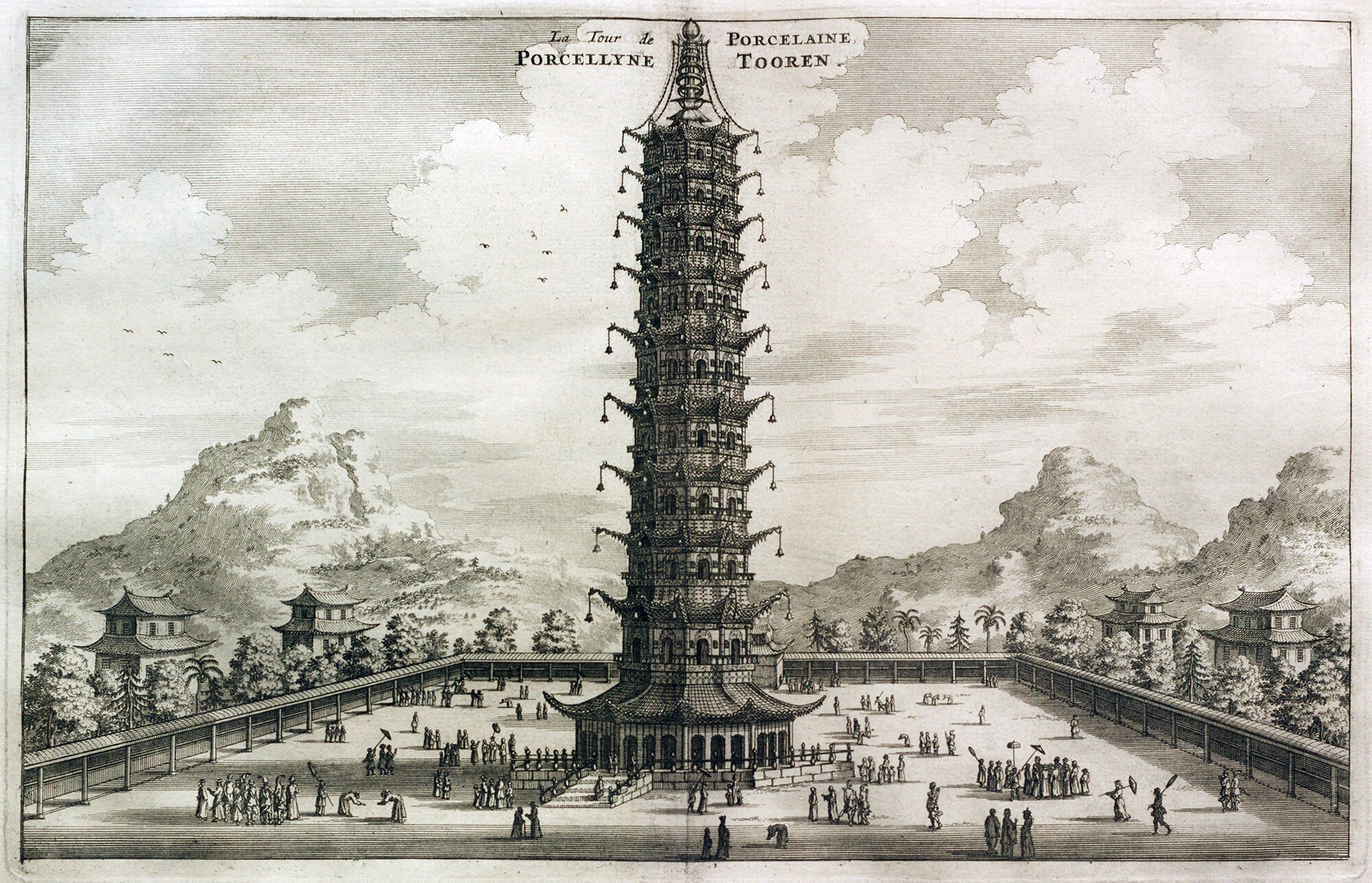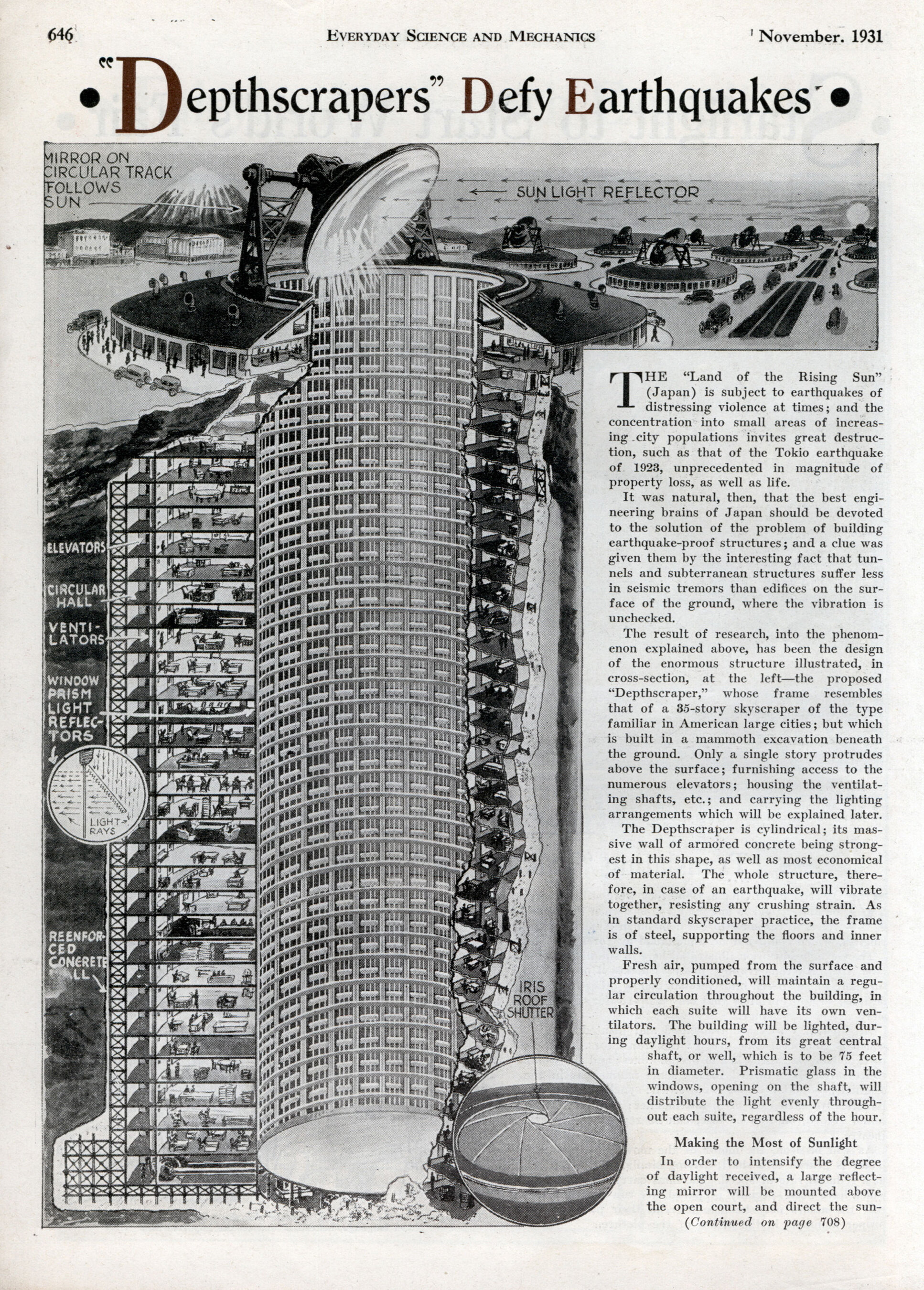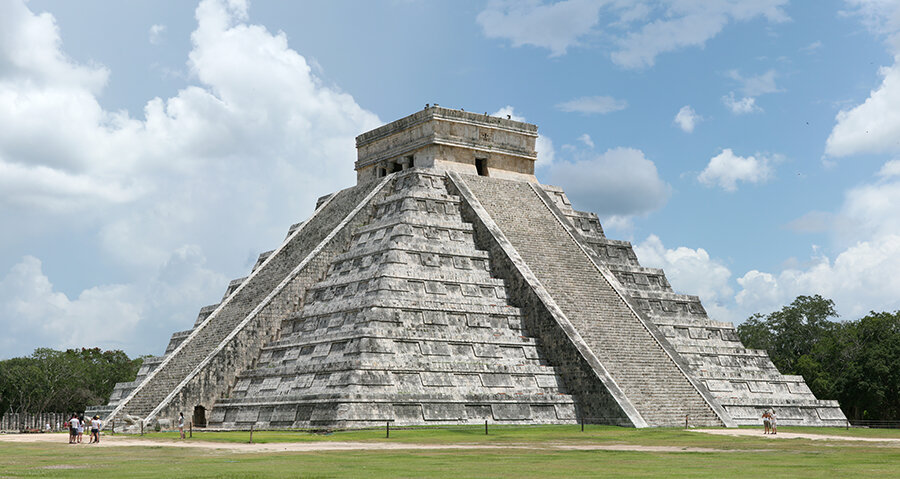Welcome to On Verticality. This blog explores the innate human need to escape the surface of the earth, and our struggles to do so throughout history. If you’re new here, a good place to start is the Theory of Verticality section or the Introduction to Verticality. If you want to receive updates on what’s new with the blog, you can use the Subscribe page to sign up. Thanks for visiting!
Click to filter posts by the three main subjects for the blog : Architecture, Flight and Mountains.

Ryōunkaku Tower: Japan's First Skyscraper
This is Ryōunkaku, Japan’s first western-style skyscraper. Built in 1890 in the Asakusa district of Tokyo, Ryōunkaku resembles a lighthouse, with an octagonal plan and a slight taper, topped with two setbacks and a pointed roof. The name Ryōunkaku translates to Cloud-Surpassing Tower, which indicates the importance of Verticality for the building’s landmark status.

The Porcelain Tower of Nankin
This is the Porcelain Tower of Nankin. It stood at a height of roughly 79 m (260 ft), and is one of the tallest pagodas that we have records of. It was built as part of the Great Bao'en Temple in present-day Nanjing, China. Pagodas are usually associated with a temple, which suggests that they function much like a bell tower or steeple, using Verticality to announce the importance of a place.

The Earthquake-proof Depthscraper
Take a look at this design for a subterranean tower from Everyday Science and Mechanics in 1931. The structure was designed by Japanese engineers in response to earthquake concerns, so the building claims to be ‘earthquake-proof’. Technical aspects aside, questions abound regarding the experience of living or working in such a structure.

Verticality, Part VI: Archetypes
Man’s initial attempts to get closer to the sky in each of the five cradles of civilization
How does one achieve physical Verticality? At the most basic level, we can get closer to the sky in two ways. First, we can recreate the human body with singular elements that express height on their own. These objects can be seen as proxies for our own bipedal bodies. Second, we can physically raise the surface under our feet in order to raise our bodies up closer to the sky. These constructions can be seen as recreations of mountains, which are the highest places we can reach in the natural landscape. As our ancestors set out to externalize their need for Verticality, they experimented with both of these methods.
